This slippery creature produces real voltage, but could it actually power your life in a pinch?
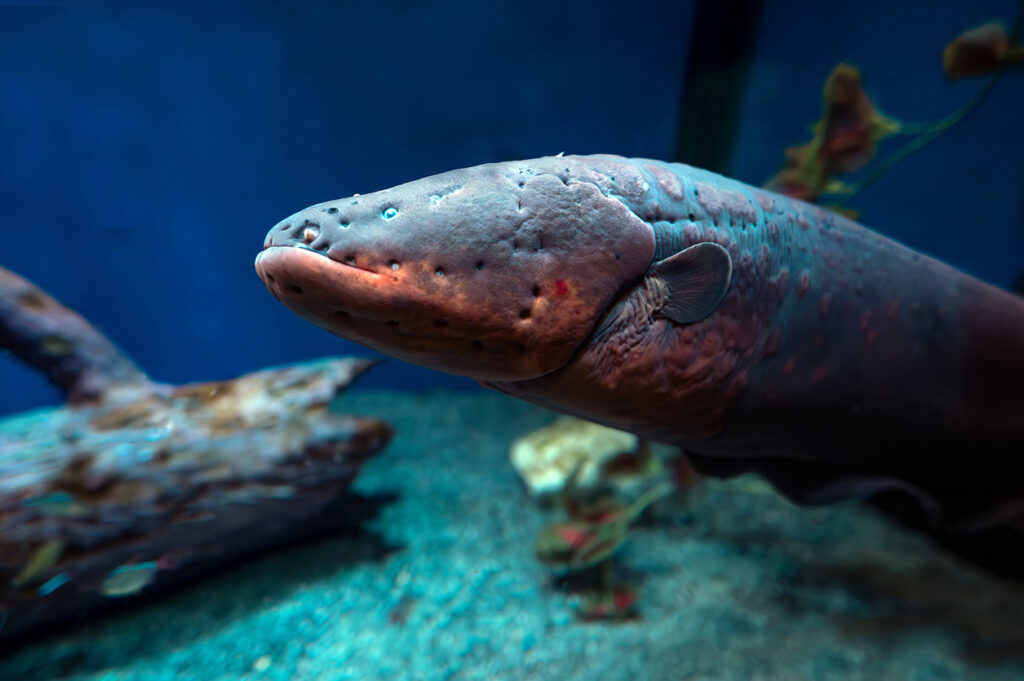
You’re deep in the Amazon, your phone’s dead, and an electric eel swims by. Could it help you charge up? Technically, yes, it produces real electricity, up to 600 volts. But before you grab a USB cable and go full MacGyver, know this: the eel’s shocks are quick, unpredictable, and definitely not built for battery life. Sure, it’s stunned prey, lit up a Christmas display, and inspired some futuristic battery designs—but charging your phone? Not so much. Let’s just say it’s more zap than app. Here’s what science actually says about plugging into one of nature’s weirdest power sources.
1. Electric Eels Can Unleash Up to 600 Volts of Electricity
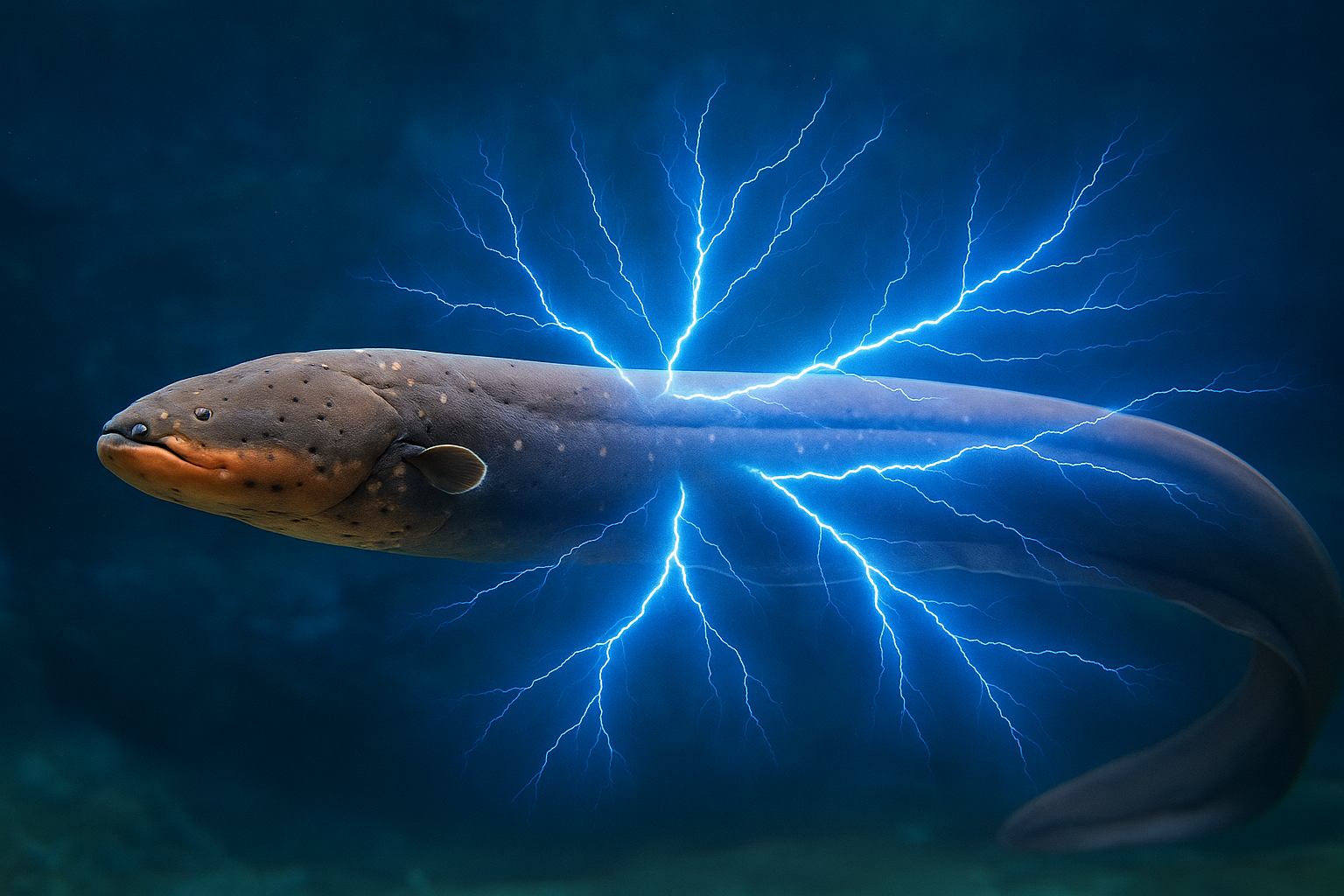
Electric eels (which are actually knifefish in disguise) can unleash up to 600 volts in a single zap, roughly five times what comes out of your wall socket. Their secret? Electrocytes, special cells stacked like tiny living batteries along their bodies, ready to fire off a high-voltage ambush when prey or predators get too close. Scientists at Vanderbilt say these shocks aren’t just brute force, they’re precise, timed, and adjustable, depending on whether the eel is hangry or just feeling threatened. In some cases, they’ve even been spotted leaping out of the water to deliver shocks face-to-face, like the Amazon’s most electrifying bouncer. That power might sound like a solution to your dead phone battery, but here’s the catch: each burst lasts less than two milliseconds. So yes, they can knock out a fish or even (according to Alexander von Humboldt) a horse, but they won’t be juicing up your gadgets anytime soon.
2. But the Amperage? Barely Enough to Charge a Toothbrush

Sure, electric eels can throw down 600 volts, but the amperage? That’s where things fizzle. While voltage is the flashy headline, amperage is the steady flow you actually need to charge something, and an eel delivers less than 1 amp in short, twitchy pulses. Think of it like a high-powered water gun with a one-second squirt, not exactly your dream power source. A typical smartphone charger pulls 2 to 3 amps sustained for hours. Even an electric toothbrush wants a solid half amp for a few minutes. The eel? It gives you a jolt that lasts about two milliseconds, tops. Great for fish. Useless for phones.
And unlike your wall outlet, the eel doesn’t do “on-demand.” It only fires when hunting or panicking, so unless you’re constantly startling the poor thing (please don’t), you’re getting zilch. Scientists writing in Nature Communications confirmed that eel shocks are carefully timed and neurologically controlled, not some endless electric buffet. Bottom line: cool party trick, terrible charger.
3. Could It Light a Bulb? Maybe… for a Second

Technically, yes, an electric eel can light up a bulb, but don’t cancel your electric bill just yet. In carefully rigged setups, scientists have connected eels to ultra-low-voltage LEDs and seen them flicker briefly when the eel zaps. It’s like that static shock you get touching a doorknob: flashy, fun, and over before you can say “bioelectricity.” The eel’s high-voltage pulse is impressive, but it lasts milliseconds and doesn’t carry much current, so you’d need to stack dozens of pulses just to keep a nightlight going.
This has been done, by the way: the Tennessee Aquarium wired up a tank where an eel named Miguel Wattson (yes, really) could flash festive lights with his zaps. But he wasn’t powering the lights; his pulses just triggered them, like a living switch. So yes, an eel can light a bulb for a moment. But as a lighting solution? It’s more science fair than sustainable.
4. One Aquarium Actually Did Connect an Eel to a Holiday Display
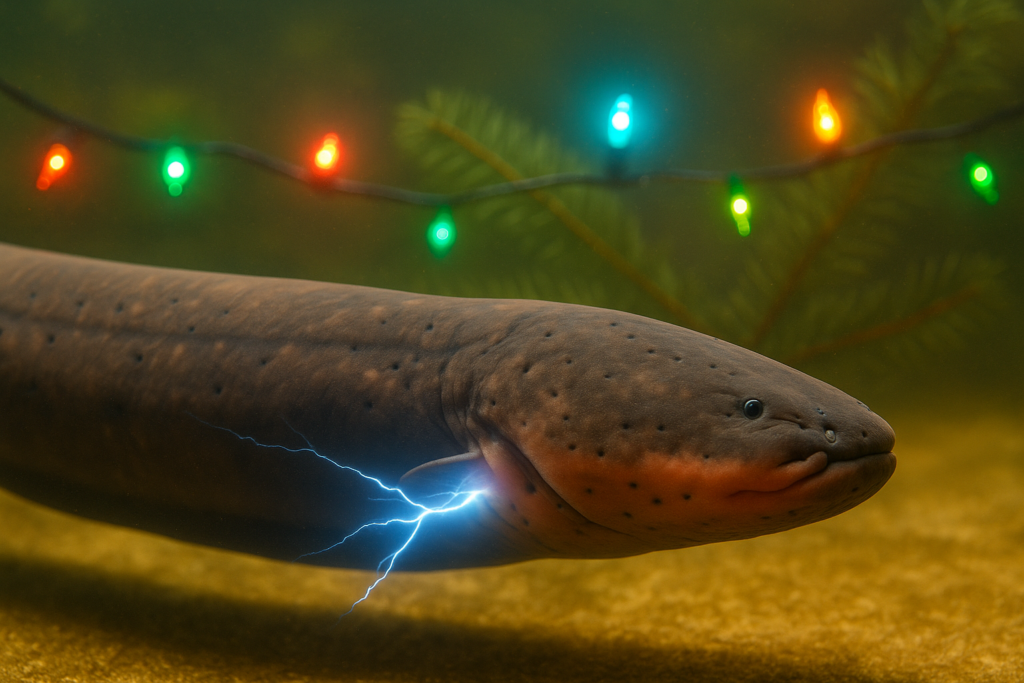
In the most festive use of bioelectricity ever recorded, the Tennessee Aquarium hooked up their resident electric eel, Miguel Wattson, to a string of Christmas lights. Every time Miguel let off a zap usually while hunting for lunch the lights flickered in sync. It wasn’t that Miguel was powering the bulbs directly (he’s not a sentient power grid); his electrical bursts were detected by sensors, which then triggered the lights. In essence, he was flipping a biological light switch every time he got excited.
The result? A holiday display powered by one very energetic fish. Miguel even had his own Twitter account that posted updates each time he shocked the system. But let’s be clear: this was a clever, sciencey stunt, not a new renewable energy source. The lights were still connected to the regular electricity supply. Miguel was just adding sparkle. So yes, an eel can get in the holiday spirit, but don’t expect it to deck your whole house.
5. Scientists Are Taking Notes for the Future of Batteries

Electric eels might not be charging phones, but their anatomy is inspiring the next generation of batteries, and no, that’s not sci-fi. Researchers at the University of Michigan and Yale have studied how eels generate electricity using stacks of electrocytes, which act like tiny organic batteries. Instead of toxic metals or flammable chemicals, eels use ion gradients and biological membranes to safely zap out voltage. Inspired by this, scientists have created soft, flexible battery prototypes using hydrogels and saltwater. They’re not going to power your Tesla, but they could someday juice up a pacemaker or wearable medical device.
The big idea? Eel-inspired batteries could be biodegradable, biocompatible, and function in wet environments, essentially addressing the challenges that modern batteries struggle with. A 2017 Nature study demonstrated how mimicking the eel’s electrocyte design could lead to safer technology for use within the human body. So while the eel won’t replace your charger, it might inspire the one inside your next smartwatch.
6. But Eel Power Is Wildly Inconsistent
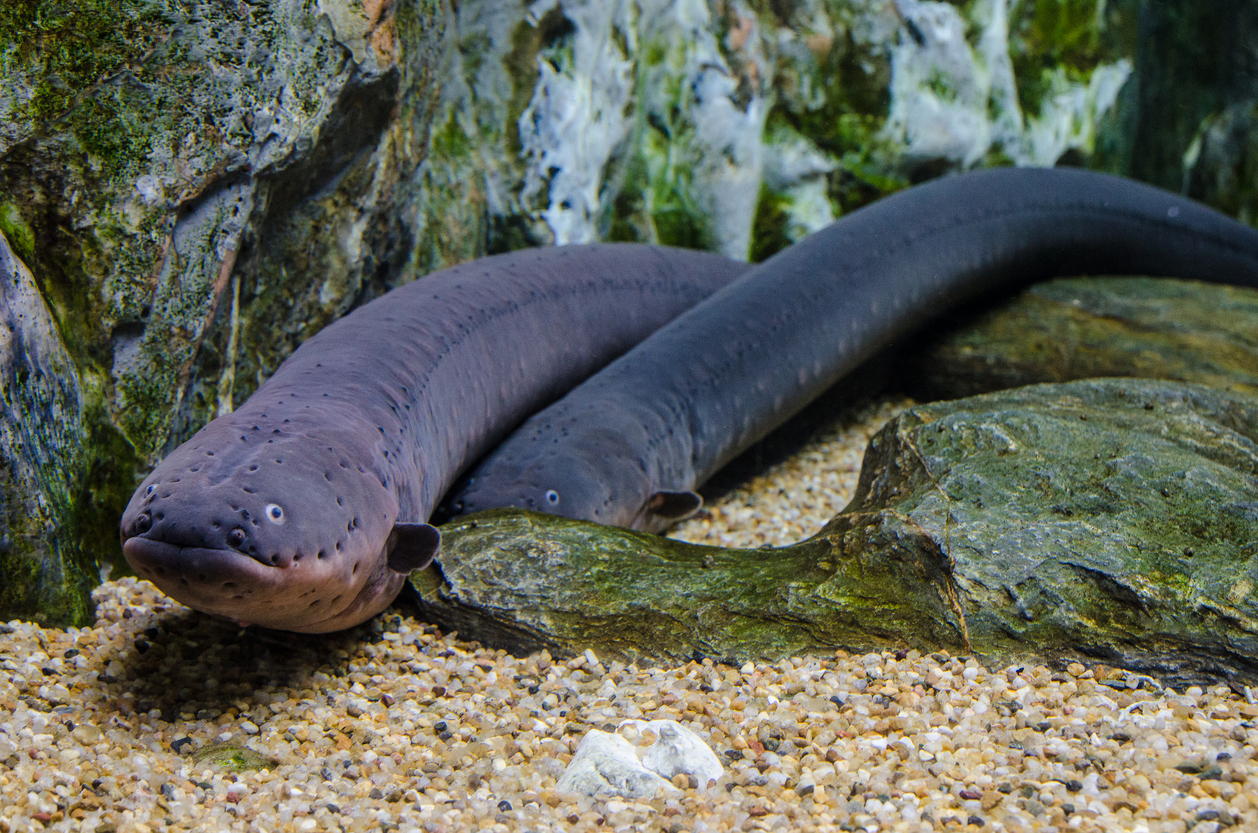
If you’re imagining an electric eel as a swimming power bank, think again. These creatures don’t store energy, they generate it in real time, and only when they feel like it. That means no steady current, no reserve tank, and definitely no “charging mode.” An eel zaps when it’s hungry, spooked, or annoyed not when you plug in your phone. A study in Current Biology showed that their electrical bursts are under tight neurological control, lasting just milliseconds and happening only on demand. Think lightning strike, not power strip.
And even if you could somehow convince an eel to fire repeatedly, the energy would still be delivered in short, twitchy pulses, not a smooth, usable stream. You’d need a whole lab setup with capacitors and converters to collect and regulate the output… and even then, you’re still getting scraps. In other words, a great survival feature, but a terrible energy plan.
7. Charging Your Phone? That Would Take Hours—And a Very Grumpy Eel
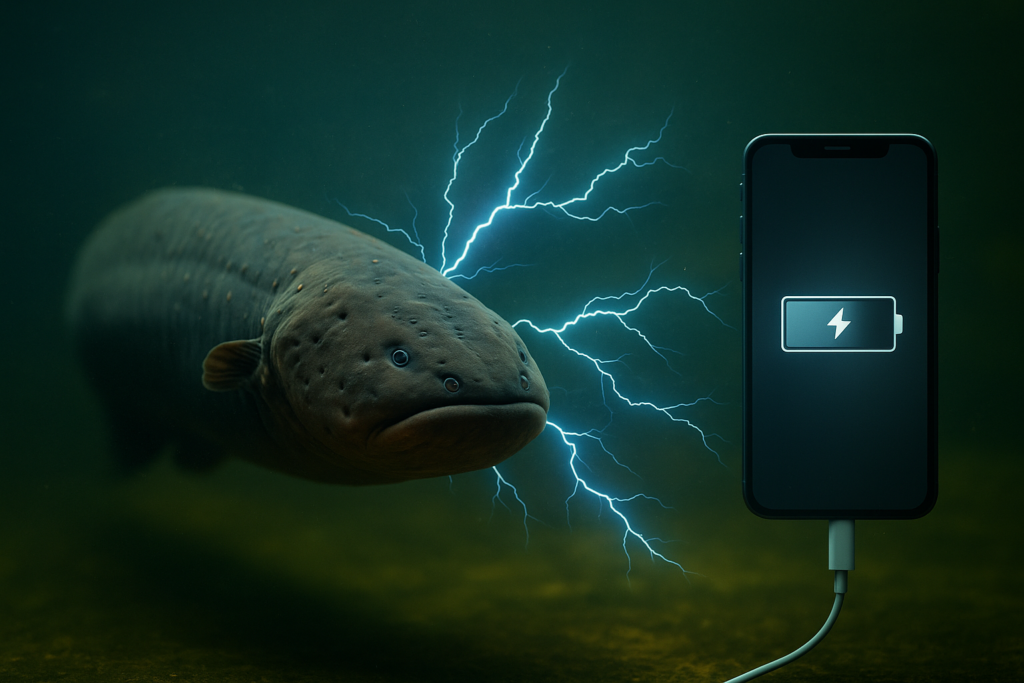
Let’s do the math: your average smartphone needs about 10 watt-hours to fully charge. A single shock from an electric eel produces about 1 joule of energy. Since it takes 3,600 joules to equal just one watt-hour, you’d need about 36,000 shocks to get your phone to 100%. And that’s assuming you capture every zap perfectly, which you absolutely won’t. Even then, the eel would need rest between pulses, because unlike your portable charger, it’s a living creature that gets tired (and possibly annoyed).
Also, let’s talk ethics. Eels only discharge electricity when triggered by prey or a threat. So, to keep the “charging” going, you’d need to poke the eel over and over to keep it firing. Not only is that stressful for the animal, but a study in Journal of Experimental Biology shows their power fades with fatigue. So by the time you hit 10%, your eel is over it, and you’re still phone-less. $10 solar panel can do better in an hour. Source: Journal of Experimental Biology
8. Also, Please Don’t Try to Plug Anything Into an Eel
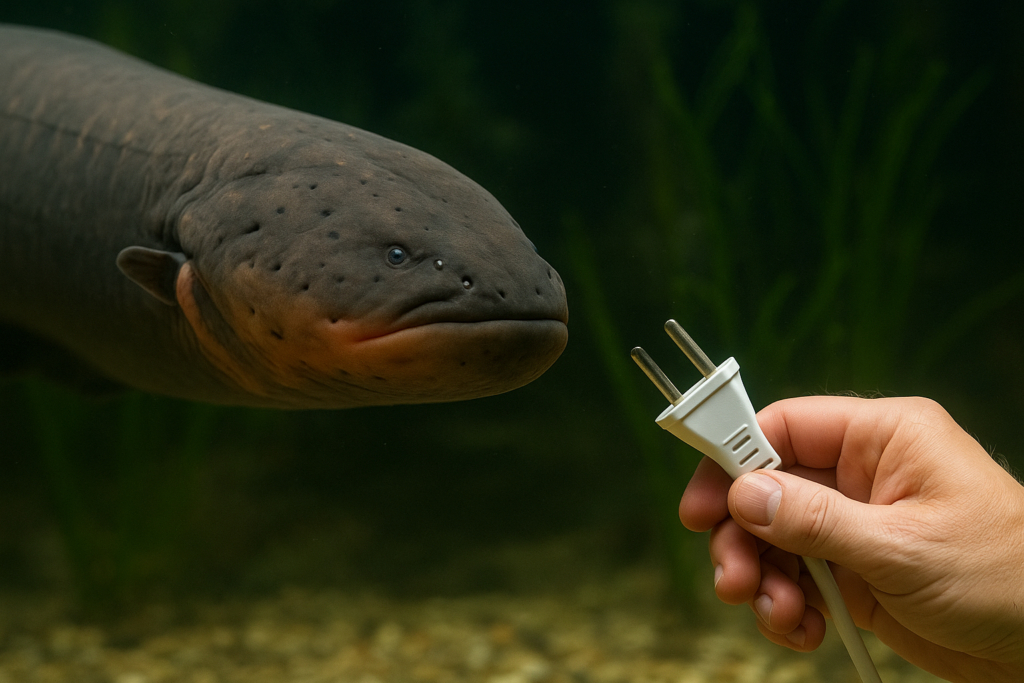
8. Also, Please Don’t Try to Plug Anything Into an Eel
Let’s get this out of the way: you cannot, and absolutely should not, try to plug a charging cable into an electric eel. For starters, it’s a living animal, not a waterproof outlet. And more importantly, harvesting its electricity would require repeatedly stressing it into firing, basically electrocuting it for your own convenience. According to a 2021 report in Frontiers in Veterinary Science, this kind of provocation is not only unethical, it’s harmful to the eel’s health and wellbeing. Their slime coating protects them from infection, and repeated stimulation could wear it down or mess with their nervous system.
There’s also the minor issue that an eel shock, while not usually fatal, can absolutely knock a person off balance, especially in water. A single pulse can trigger involuntary muscle spasms, confusion, or even unconsciousness if you’re not careful. So, unless your dream involves a hospital visit and a furious fish, let’s keep the USB cables far from the tank.
9. This Energy Is More Useful in a Lab Than in Your Backpack
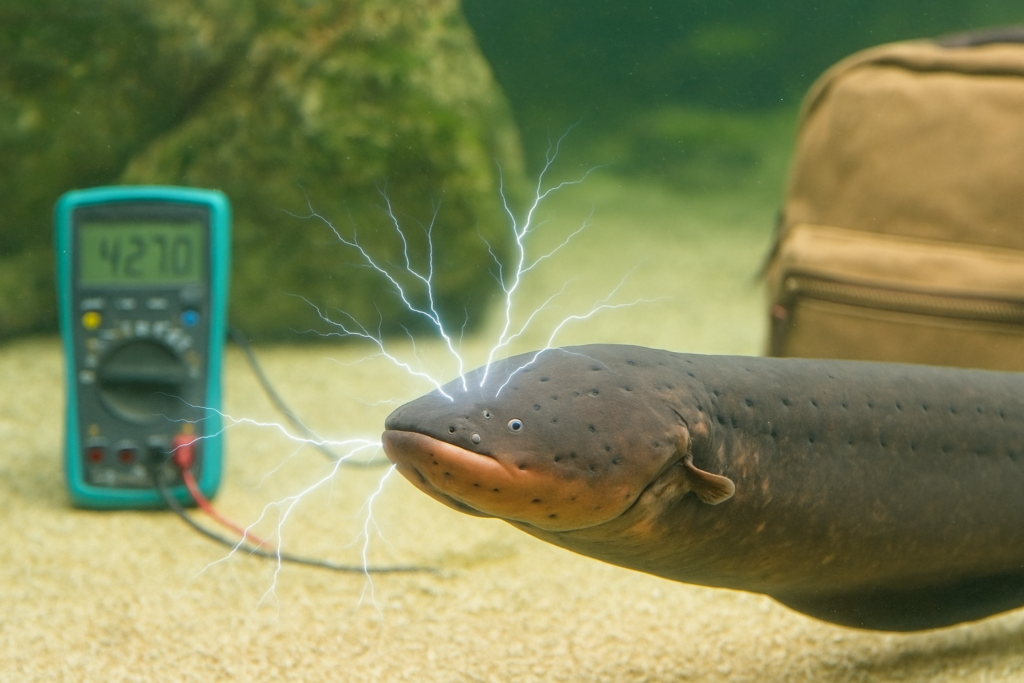
Electric eels aren’t charging your gadgets, but they are charging up some serious scientific curiosity. Researchers from Yale, Michigan, and beyond are studying the eel’s natural power system as a blueprint for safer, softer batteries. Instead of using heavy metals or combustible chemicals like lithium-ion batteries, these bio-inspired designs mimic the eel’s electrocytes, stacked cells that create voltage using salt and water. The result? A potential future of flexible, biodegradable power sources that could live inside your body or wrap around wearable tech.
But don’t expect to toss one in your carry-on. Eel electricity is ideal for lab demonstrations and experimental breakthroughs, rather than meeting day-to-day energy needs. Their energy output is low, inconsistent, and unsuited to the real world unless you’re trying to impress at a science fair. The value isn’t in the volts, it’s in the design. Nature gave us a biological spark plug, not a travel charger.
10. Final verdict: Shocking? Yes. Smartphone Charger? Absolutely Not
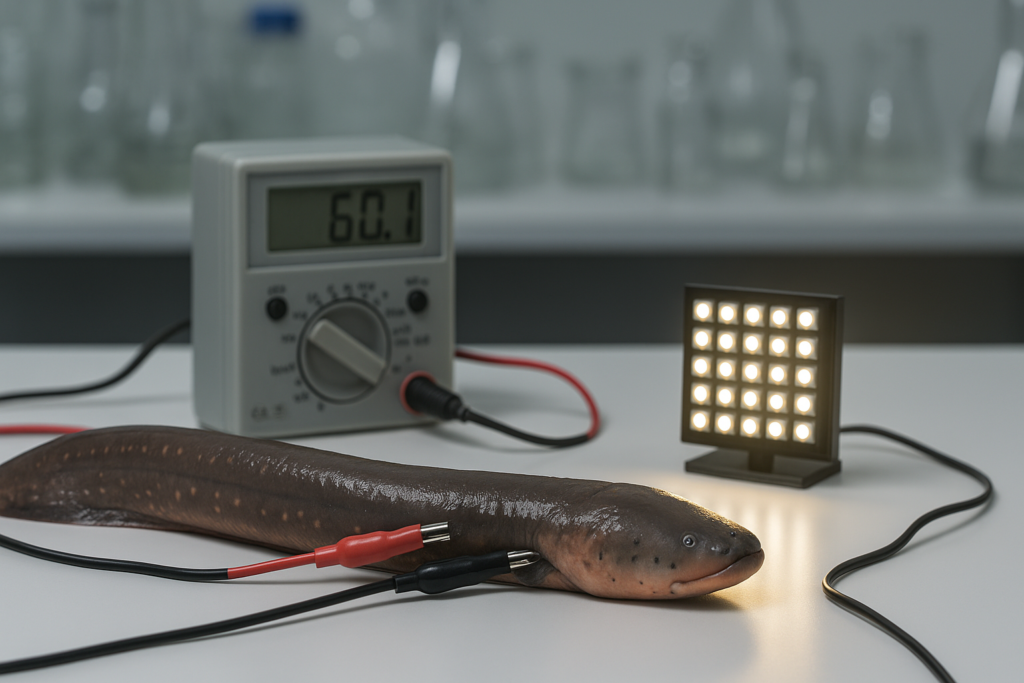
Electric eels are incredible, they can knock out prey, startle predators, and even light up a holiday display. But when it comes to powering your phone, they fall… well, way short. Their voltage is high, but their current is weak, their bursts are brief, and they only fire when they feel like it. You’d need thousands of zaps, a lab full of converters, and one seriously fed-up fish just to get a single percent of battery life. As portable power sources go, eels are flashy but flaky.
That said, they’re still making waves in science. Their unique electric system is inspiring softer, safer batteries that might someday power implants or wearable tech, no outlet required. But for now, if your phone dies in the jungle? Skip the eel and pack a solar charger. Nature’s most shocking creature is better suited to a lab tank than your lightning cable.
The story Could You Charge Your Phone With an Electric Eel? Science Says… was initially published on DailyFetch.


